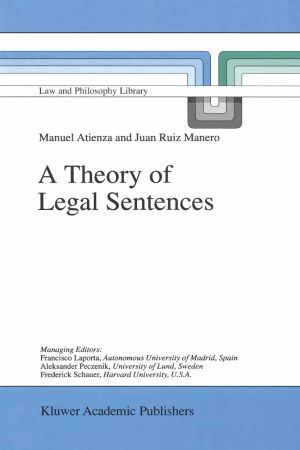We are now closed for the Christmas and New Year period, returning on Monday 5th January 2026. Orders placed during this time will be processed upon our return on 5th January.

Legal statements are, according to the authors, the most basic elements of the law. Nevertheless they must be considered not only as the pieces of a puzzle, but also as the components of a dynamic and highly complex reality: the law of contemporary society.
This text presents an analysis of the different types of legal statements (mandatory rules, principles, power-conferring rules, definitions, permissions, values and the rule of recognition) from a three-fold perspective, that is, considering their logical structure, their function in legal reasoning as reasons for action, and their connections with the interests and power relationships among the individuals and the social groups.
The result is conceived as a first step in the building of a general theory of law designed not as an isolated discourse but as a decisive element for the dynamization of the legal culture.